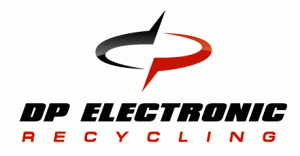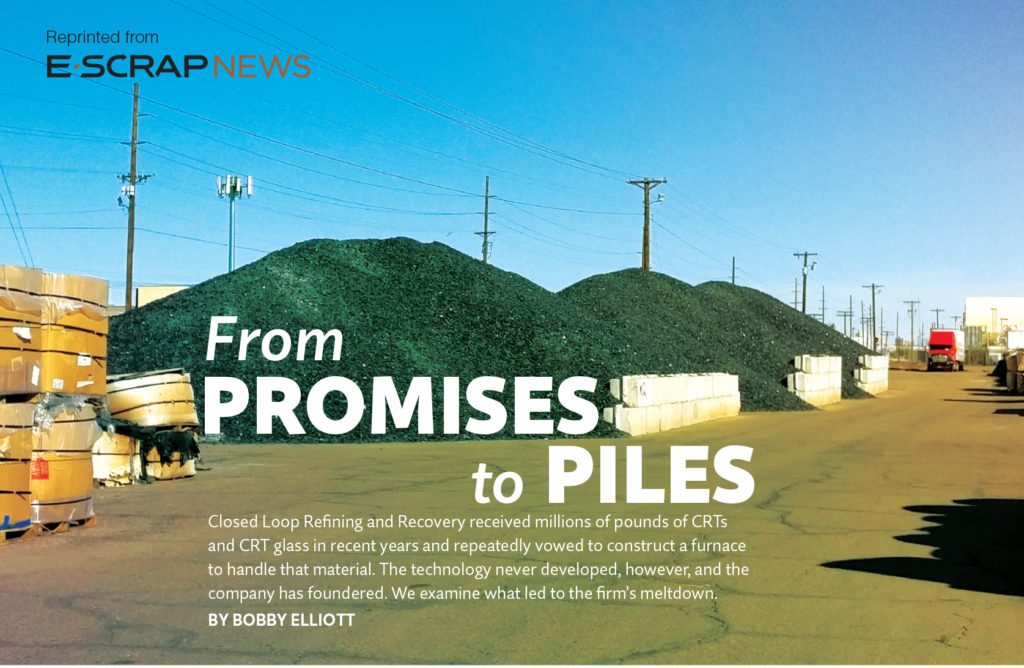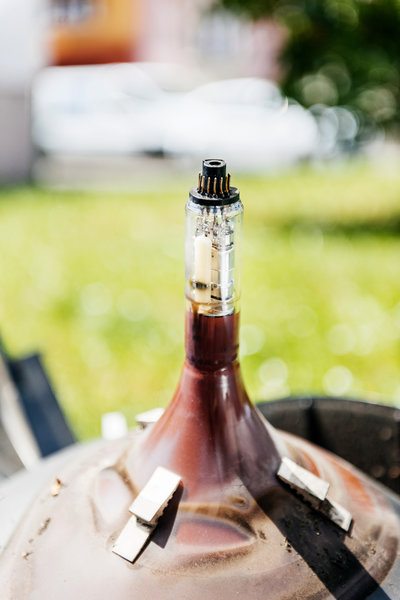The federal EPA has clarified its regulatory stance on whether leaded glass destined for tile manufacturing or landfill cover should be considered recycling.
In separate letters dated Sept. 10 and uploaded onto the agency’s website, Barnes Johnson, the director of the Office of Resource Conservation and Recovery, addresses the use of CRT glass as alternative daily cover (ADC) and as a flux and lead oxide in making ceramic tiles.
According to those letters, the ADC option is considered legitimate disposal while the tile option is legitimate recycling.
“Hazardous waste, such as CRT glass, that has been treated … and that no longer exhibits hazardous characteristics may be disposed in a landfill,” Johnson writes in the ADC letter. On the tile front, the agency states, “Based on the provided information, the EPA finds the legitimate recycling factors set forth in EPA policy … appear to have been met.”
The letters are addressed to two of the biggest names in the end-of-life electronics game: The ADC letter was sent to Sony, and the tile letter was sent to Sims Recycling Solutions, the electronics recycling wing of publicly traded Sims Metal Management. Sony had asked the agency for clarification on the ADC front, while SRS had requested clarification on the tile option.
It’s significant that the tile process received an OK to be deemed recycling while landfill cover is only considered “disposal.”
Both ADC and tile applications are seen as emerging downstream applications for CRT glass, which has become increasingly burdensome for e-scrap firms. Consumers worldwide have moved to non-CRT technologies so glass-to-glass markets for recycling firms have eroded, but the backlog of old monitors and TV sets continues to head into the e-scrap recycling stream.
While the EPA’s two letters noted the authority of states to set forth “more stringent” regulatory policies than those asserted by the federal agency, states are likely to refer to the EPA letters for guidance on policy making in the CRT arena.
Kuusakoski U.S. is the only company currently offering the CRT-to-ADC option in North America, partnering with a landfill located in Peoria, Illinois. The process, according to the company, seals the lead within the glass to prevent leaching and then is spread on top of a landfill as ADC. A Vermont-based firm also looked into the option.
Some states have already concluded the option is not recycling and therefore does not count toward manufacturer recycling goals. In addition, the R2 e-scrap environmental standard has banned the use of CRT glass as ADC. The other certification standard, e-Stewards, meanwhile, allows it as a “last resort,” but does not deem it recycling.
The tile option, which will perhaps now get more play, has been looked at for some time both in the U.S. and abroad. Sims’ inquiry, E-Scrap News has learned, was related to a Spanish firm, Camacho Recycling, which has been pushing for U.S. glass to process and use in the manufacturing of ceramic tiles. Com2 Recycling, an Illinois-based firm, is also expected to come on-line with its own CRT-to-tile operation in the coming weeks.
Both ADC and tile manufacture have been raised as plausible alternatives to the standard, and often pricey, processing options currently available to U.S. firms, namely North American lead smelting and “glass-to-glass” recycling in India. While estimates vary widely, as much a 400,000 tons of CRT glass are expected to hit the waste stream each year until 2022.


 One of the country’s largest outlets for CRT glass, Closed Loop Refining and Recovery, is no longer certified to the R2 standard in Arizona and has seen its certification in Ohio suspended.
One of the country’s largest outlets for CRT glass, Closed Loop Refining and Recovery, is no longer certified to the R2 standard in Arizona and has seen its certification in Ohio suspended. An e-scrap processor has announced plans to build a facility in Whitewater, Wisc. with the goal of transforming CRT glass to tiles.
An e-scrap processor has announced plans to build a facility in Whitewater, Wisc. with the goal of transforming CRT glass to tiles.
 A lobbyist has been hired by R2 and e-Stewards to stage a last-minute fight against a bill that’s moving swiftly through the Illinois legislature.
A lobbyist has been hired by R2 and e-Stewards to stage a last-minute fight against a bill that’s moving swiftly through the Illinois legislature. As the e-scrap industry has struggled to efficiently handle CRT glass in recent years, many stakeholders have held out hope that technologies could be developed to cost-effectively remove lead from the material and pave the way more CRT recycling.
As the e-scrap industry has struggled to efficiently handle CRT glass in recent years, many stakeholders have held out hope that technologies could be developed to cost-effectively remove lead from the material and pave the way more CRT recycling.